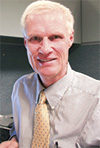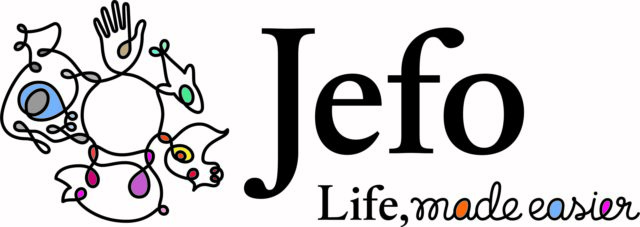This column was originally planned as my second one from Walton, New York. I have been assigned here by NRCS and so there is a lot to write about. But I am taking a different path in this column. My ex-father-in-law, Mr. Donald E. Carter, died on October 27, 2013, at the age of 81. I write of him here.
Don had a profound influence in my life. My own father, Jack Gangwer, and his father, Everett Gangwer, had gone out of the dairy business in 1959. I was 7 years old, but I do remember the cattle and machinery auction in Pine Grove, Oregon (Hood River County). My father and Don were high school classmates, both graduating from Hood River High School in 1959.
I was to begin working on the Carter Farm, named Cascade Dairy, in 1967 while a freshman in high school. Don needed some help with moving sprinkler pipes and so I began my work on the dairy – at $1 per hour, as I recall.
I continued working on the farm through my high school years, was part of the FFA program – and because of my work earned a National Proficiency Award and my American Farmer degree in 1971 and 1972. I went off to college, first at Cal Poly State University in San Luis Obispo, California, and then my master’s work completed at the University of Wisconsin – Madison.
Don and Peggy’s daughter Nancy and I were married during the later college years, and in 1978, after Wisconsin, we moved into the little house on the dairy and began in partnership on Cascade Dairy.
I was fortunate in that I was largely responsible for the dairy herd and Don took care of the crops. We milked in the neighborhood of 120 cows, sometimes more and sometimes less, but our freestall barns and feeding barn were modern enough. That barn, coupled with our double-four Clay 38-inch herringbone parlor, was a good facility.
We purchased some additional land, about 100 acres several miles away from the farm, and Don was always looking for rental ground and during the spring and summer, off-farm pastures where we could raise our heifers. Some of these pastures were quite far away, and the task of keeping them in with fencing was always a challenge.
Don liked to farm and he liked equipment. In the later years, through the late ’80s, we had a fleet of John Deere tractors including a 7020, a 5020, a couple 4020s, a 3020 (loader), a 2020 (used in the pear orchard), a model M and two model 60s, one of which was my manure-scraping tractor. The only non-JD tractor was a Case 430, a diesel orchard-like tractor (low-set).
We had the usual fleet of equipment for growing barley, corn silage and earlage, and alfalfa. Don was a superb farmer … he understood soil fertility and made extensive use of soil analyses and manufactured fertilizer to adjust fields that did not have enough manure.
He was adamant that the alfalfa be cut on a 30-day or so rotation, and we always chopped corn at the first sign of the black layer at the base of the kernel. I remember our first bagging machine and how different this storage system was from the original wooden bunker silo with a roof over the top.
We poured several concrete slabs so during winter we could feed out of AgBags. I remember to this day opening the first corn silage bag and feeding it … the cows ate every bit of it.
We moved to commodities like many dairymen, installing Butler grain tanks and then purchasing a roller mill – I do not remember the brand name but we rolled barley directly into the mixer wagon, adding the other commodities including the three we always used: soybean meal, whole cottonseed and beet pulp.
In the later years, we removed the feed out of the milking parlor and fed everything directly as a commodity in the lock-up stanchions. We modernized over the years, adopting most of the excellent suggestions by Oregon State University and Washington State University Cooperative Extension Service.
At times, Don and I had disagreements about the farm, not so much with production issues but where to spend money. Do we put money into the dairy facilities themselves or buy more land? Do we buy a feed commodity or do we grow it?
I remember the years of moving into barley production and buying a combine and roller mill. It was a good move. So too was the year we purchased a snapper head for the forage chopper. After installing a recutter screen, we stored the earlage in the silage bags and the cows milked very well on it.
All of the cows and heifers were bred artificially, and we put the herd on DHIA test. I do not remember the numbers as much as I remember poring over the data sheet when the envelope arrived from the DHIA processing center in Provo, Utah. We were particularly interested in trends rather than the absolute number.
May I add here that Don’s wife, Peggy, was with him every step of the way. She was the financial manager and nothing was done without her OK. Many times Don and I had a harebrained idea and she stopped us – and appropriately so. Although every once in a while, we sold some steers for our mad money purchases.
The late ’80s arrived and I found myself less enthusiastic about the farm … our parlor was aging and we were not adding cows or modernizing the farm as I thought we should. I am not sure why. But in December of 1989, I told Don I did not want to be a dairyman any more. I will never forget that moment. For me, it is one of the lowest points in my entire life, and I remember the conversation nearly verbatim.
I consider my exit from Cascade Dairy a failure on my part, and I blame no one else. Nancy and I divorced a year or so later. Don stayed in the dairy business a few more years, as his oldest son, David, farmed with him.
I was fortunate in having a couple of college degrees, and within a month of leaving the dairy industry, Oregon State University hired me to work as an extension faculty member based in the Willamette Valley, Oregon, so I joined a fine staff including Mike Gamroth.
As most of my readers know, I was to be based in a USDA-NRCS field office and thus begin a career working with the environmental issues facing dairy farmers. My formative years were built upon a relationship with two colleagues, Monte Graham and Bruce Wilson. Many years ago, I wrote of our work in this column, and while both of them are now retired, I do stay in touch with them.
No doubt, I disappointed the entire Carter family by leaving the farm. Looking back more than 20 years now, I often wonder what the farm would be like if Nancy and I were still there. If there is any good out of leaving, it is that in all the years since 1989, I do have a much greater appreciation for two things.
One, that the farm family, e.g., the people on a farm have to be working together regardless of herd size or crop productivity. It may seem coy to write it here, but on the hundreds of dairy farms I have visited over the years in all parts of the world, I am especially tuned into the farm family dynamics.
And two, Don Carter and his family taught me more about the dairy business, farming and family dynamics than the sum total of all my formal college education. I often say and write that everything I needed to know was learned on the Cascade Dairy Farm; all the formal college training is a mere refinement of it.
May I write that in my life now of 61 years, the years on the dairy farm in Parkdale, Oregon, are ever so important to me. Yes, I miss a lot about the farm. I have often written that I still have emotional roots here, and it is home that no other place can be or will be.
I get back to visit every so often. I flew the Mooney out West this summer and stayed a few days in Hood River. I spent a couple hours with Don, and so I got to see him one last time before he died. I am so thankful I spent these two hours with him.
The composition of a life includes a handful of people who have an extraordinary influence on it. For me, Don Carter was one of these people. I loved him very much and now I miss him. I can do my work today because of him, and for this, I am deeply grateful. PD

Mike Gangwer
Agricultural Scientist
USDA-NRCS




